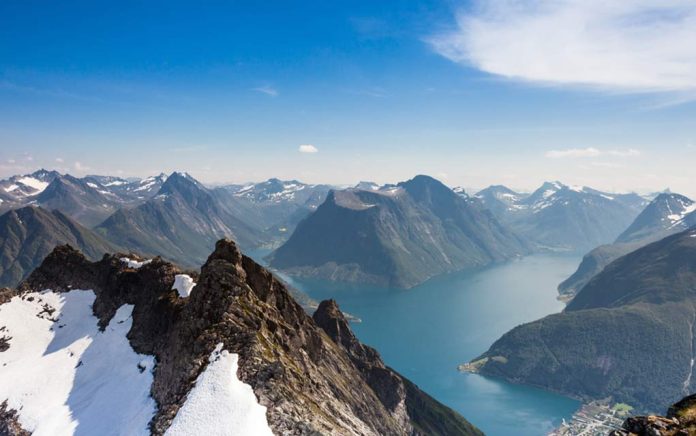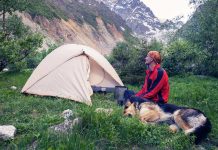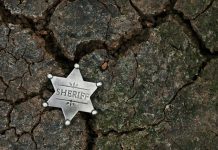(SurvivalDaily.com) – Visiting the mountains can be exciting. It’s all about beautiful views and the sense of accomplishment when reaching the peak. Those same mountains are just as dangerous as they are beautiful. They are killers hidden in plain sight. You can sense it, feel it, but by then it could be too late.
We are of course talking about altitude sickness, a very real, and potentially dangerous condition caused by a sudden change in altitude. More common than you think, it affects people who don’t allow their bodies to acclimate to the change in altitude. It’s important to know the signs and symptoms of altitude sickness before going up in the mountains.
Identifying Altitude Sickness
Your body is going to make adjustments as you ascend. You’ll notice changes in breathing, mostly rapid but still comfortable. You may experience shortness of breath if you’re engaging in strenuous physical activity. Frequent urination may also be experienced.
These are really nothing to worry about and are normal when climbing a mountain. Though you may experience pauses in breathing while you sleep. This and the frequent urination are due to low carbon dioxide levels and adjustments made by your kidneys and brain.
When oxygen levels are low you’ll experience more serious symptoms as your circulatory system makes adjustments. This is when Acute Mountain Sickness (AMS) may kick in. Symptoms of AMS typically start 8-36 hours after ascent and include:
- Nausea or vomiting
- Dizziness or lightheadedness
- Loss of appetite
- Weakness or fatigue
- Trouble sleeping
A headache that isn’t relieved by over-the-counter medication such as ibuprofen may also be experienced.
There are other, more severe illnesses you can experience as a result of AMS. One such illness is known as High-Altitude Pulmonary Edema, a response by the lungs to an increase in altitude.
HAPE can occur without experiencing the symptoms of AMS. The low concentration of oxygen can cause blood vessels in the lungs to contract or tighten, increasing pressure in the lung’s arteries and causing a fluid leak from the vessels into the lungs. Symptoms of HAPE include:
- Extreme fatigue
- Tightness or fullness in chest
- Inability to catch your breath, even resting
- Coughing, potential to produce pink frothy fluid
- Fever above normal body temp but below 101ºF
- Blue gray fingernails or lips
- Strange noises when breathing like gurgling or rattling
These symptoms typically occur at night, and can worsen with exertion.
Recognizing the signs of altitude sickness early on can literally save your life. If you begin to experience a headache, stop and take some pain-relievers. If your headache doesn’t go away or you are experiencing other symptoms the illness can be diagnosed without testing.
HAPE can be a little trickier to diagnose, as the symptoms may only include fatigue in the early stages. More serious symptoms that call for concern are dry coughing, difficulty exercising, rapid heart beat, and shortness of breath even when resting. Medical tests can help diagnose HAPE. X-rays can be used to look for signs of fluid building up in the lungs much like pneumonia. Listening to your lungs with a stethoscope may reveal a crackling sound with each breath.
Treatment
When experiencing mild symptoms of AMS you need to stop your ascent. Do so until the symptoms either subside or you decide to descend. If you’re experiencing the more severe symptoms or symptoms of more serious illnesses it is imperative you descend immediately. If you stay in your current location or decide to continue your ascent, the symptoms will get worse and may result in death.
If you experience any symptoms of altitude sickness don’t consume alcohol, sleep aids, or narcotic pain killers. These slow your breathing, which is very dangerous in low-oxygen circumstances.
Treatment for HAPE can additionally include supplementary oxygen, nifedipine, and hyperbaric therapy.
Prevention
Perhaps the best way to combat altitude sickness is to simply avoid it to begin with. There are a few things you can do to help prevent the illness.
- Don’t increase altitude more than 1,000 feet per night
- Drink plenty of fluids during altitude exposure
- The first few days of ascent, limit your physical exertion
- Every 3,000 feet, spend a second night at this elevation before ascending further.
If early signs of illness are present you can keep from getting worse by stopping your ascension or beginning to descend. Mild symptoms can be treated or at least lessened with the use of ibuprofen. If you’ve experienced altitude sickness before consult your doctor before ascending to high altitudes again. There are prescription medications to help prevent the symptoms associated with altitude sickness.
Perhaps the best thing to do is to know your limits. Not everyone’s body is created equal, don’t let pride potentially get you killed or seriously injured.
~Copyright 2021, SurvivalDaily.com

















